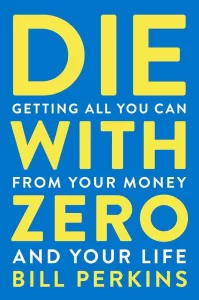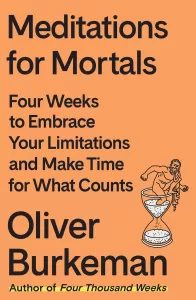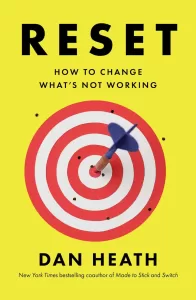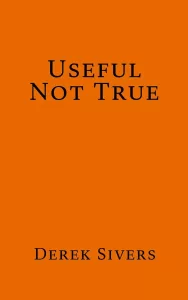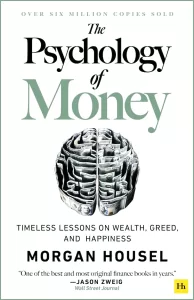Book Review: “Reset: How to Change What’s Not Working”
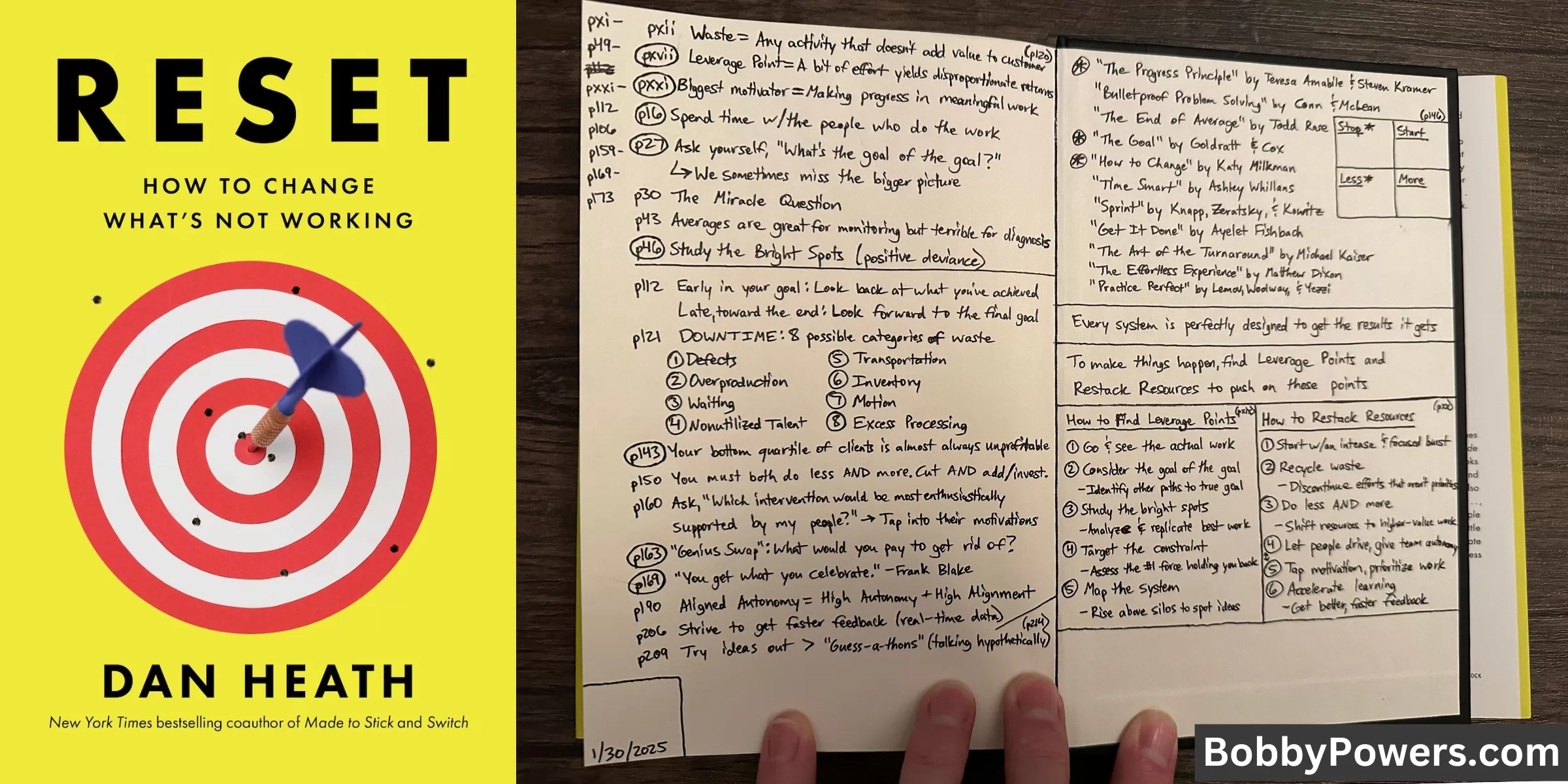
I write in the back cover of every book I read, as shown above.
To learn more about my book notes system, click here.
Book: Reset: How to Change What's Not Working by Dan Heath
Reviewer: Bobby Powers
My Thoughts: 8 of 10
Heath is one of my favorite authors. Each of his books sets such a high bar for story-telling, research, and actionable insights. Made to Stick changed the way I communicate. Decisive changed the way I make decisions. And his latest book Reset changed the way I view project management and business operations. The book is loaded with practical examples of how to troubleshoot problems and run a more efficient company.
5 Takeaways I Learned from the Book
- Researchers have found that the single largest motivator for employees is making progress in meaningful work. Find ways to help your team SEE and FEEL the progress they're making daily.
- Any company's bottom quartile of customers is almost always unprofitable. Some companies even see that their top 20% of clients generate 150% of their profit and the bottom 80% are actually unprofitable. So wild!
- Averages are great for high-level monitoring but terrible for diagnosing and fixing real problems. To fix any problem, you often need to dive deeper, go see the real work, and spend time observing the tiny little stuff.
- You need to identify your biggest constraint (bottleneck), then apply all of your effort to improving that area of your business. Applying your resources to anything other than the constraint is often a waste of time and money.
- Try the "Genius Swap" concept. Ask your team to write two sticky notes: One with the tasks they hate that they'd practically pay someone else to do, and one with the tasks they love and want to do more.
- Then pin up all the notes and see whose "hates" align with someone else's "loves."
- For example, one person may hate public speaking but someone else loves it, so the latter person takes on a couple of the speaking gigs.
- This is a great way to identify intrinsic motivation and help people spend more time in their sweet spot.
"Every system is perfectly designed to get the results it gets." -W. Edwards Deming
Selected Quotes & Ideas from the Book
Background of the Book
- "The question is: How do we reset things? How do we change what's not working?"
- "For about two and a half years, I chased answers to those questions. The principles ahead are drawn from: 240 interviews from people in countless different industries. An exploration of relevant findings from psychology and other disciplines. And a deep dive on certain methodologies that shine at helping people overcome inertia and make progress within short timeframes."
- The entire book is divided into two topics:
- Finding Leverage Points: "Leverage Points are interventions where a little bit of effort yields disproportionate returns. Of the universe of things you could do to improve a situation, the Leverage Points are the things you should do."
- Restack Resources: Once you've identified your Leverage Point(s), "the trick is to align all of [your] assets so that they push in the same direction. You need to Restack Resources on the Leverage Point."
The Progress Principle
- Researchers Teresa Amabile and Steven Kramer conducted a study to explore how people work. Their research found that the biggest motivator for employees is what they call the progress principle: "Of all the things that can boost emotions, motivation, and perceptions during a workday, the single most important is making progress in meaningful work."
- But shockingly, "most bosses were oblivious to the value of progress as a motivator" for their teams.
- "When we surveyed managers around the world and asked them to rank employee motivators in terms of importance, only 5% chose progress as #1. Progress came in dead last." -Teresa Amabile
- "It's a stunning oversight: The biggest motivator of employees is nowhere on the radar of the average boss."
How to Find Leverage Points
- "What we're looking for are interventions that are both doable and worth doing. 'Doable': meaning that they are possible in the short term. And 'worth doing': because we aspire to move boulders, not pebbles."
- "The first method for finding Leverage Points is...an approach that (MIT professor) Nelson Repenning calls 'Go and see the work.'" Examples of going to see the work:
- "If you're a school principal, shadow a student for the day."
- "If you're a factory manager, follow the production from start to finish."
- "If you're a consultant, map out the flow of activities on a single client engagement."
- "When you go see the work, if you aren't embarrassed by what you find, you probably aren't looking closely enough." -Repenning, Kieffer, and Astor
- "You'll spot places where you and your team have acclimated to problems—instead of fixing them. Those long-tolerated bad habits are Leverage Points: Correcting them is doable and worth doing."
- "Most corporate decisions are made using 'guess-a-thons.' People sit around and duel in the land of ideas." (Idea from Tom Chi, co-founder of Google's R&D lab X)
- "The only thing to listen for is: When I hear something, is it a guess or is it a direct experience? If it's a guess, it needs to be treated a certain way...But if it's a direct experience, then that's the stuff we want to make decisions off of." -Tom Chi
- "Chi's challenge to us is to get out of the 'medium of guesses' and into the medium of reality. When we go and see the work, we stop debating ideas and start discovering them."
Study the Bright Spots
- "Most leaders oversee their organizations using averages and aggregations: Revenue is an aggregation. Profit margin is an average. Net Promoter Score is an average. Averages are great for monitoring but terrible for diagnosis. Averages can tell us: Something's wrong. But they're unlikely to tell us what's wrong, or how to fix it."
- "Within the context of your goal, when have you been at your best? Let's call those unusually positive data points your 'bright spots'...Bright spots make great Leverage Points because you know they're possible. If you've done something once, you can probably do it again."
- "But bright spots are typically buried in averages, so they are not self-evident. You've got to excavate them."
- Study daily habits. Ask, "What are my A performers doing differently from my F performers?"
- "Notice there's a natural link between finding bright spots and then going and seeing the work. You identify a bright spot in the data, then you go study it."
Target the Constraint
- You need to identify your biggest constraint (bottleneck), then apply all of your effort to improving that area of your business.
- Example: "Let's say you're running a donut stand at a county fair. One person cooks the donuts, which takes 60 seconds, and the other person takes the orders, which takes 90 seconds. The stand is busy all day, with a long line of customers waiting."
- If you bought a new donut fryer that cut your cooking time in half, you wouldn't be a single second faster. You wouldn't sell even one more donut.
- Why? Because the constraint is how fast you can take orders.
- But if you hired another order taker, the constraint would switch over to donut cooking time, at which point it may make sense to buy that new donut fryer.
- "Constraints don't go away. When you relieve one constraint, you improve the system AND another constraint takes its place. There's always a constraint."
- "Investments that aren't directed at the constraint might do nothing to improve the system as a whole."
Eliminating and Recycling Waste (DOWNTIME)
- One of the best ways to Restack Resources on your Leverage Point is to eliminate waste. In the world of lean thinking, "Waste is anything that doesn't add value to your work in the customer's eyes."
- "Many organizations use the acronym DOWNTIME—inspired by the Toyota Production System, which for operations researchers is sort of like the Holy of Holies—to capture eight possible categories of waste."
- "To illustrate all eight elements, let's analyze waste in a hypothetical bakery:
- Defects: Burned cookies, sad shriveled croissants
- Overproduction: The donuts thrown out at the end of the day
- Waiting: The worker twiddling thumbs, waiting for dough to rise
- Nonutilized talent: A cake decorator washing dishes
- Transportation: The flour bag being stored too far from the mixer, requiring it to be moved back and forth constantly
- Inventory: Overbought milk that went bad
- Motion (the people version of Transportation): The counter staff's thousands of unnecessary steps going back and forth from the register to the distant coffeepot
- Excess processing: Birthday cakes being iced using an obscure French technique that pleases the pastry chef but goes unnoticed by the customer, who just wants their kid's name spelled right
- "If we can spot waste, we can immediately recycle those resources—money, energy, labor, materials—to push harder on our Leverage Points. And there's no downside! Because the customer (by definition) did not value the things that you cut back. That's why waste is worth obsessing about."
- "Micromanagement is another near-universal kind of waste."
Tap Into Existing Motivation
- "Many leaders treat 'change initiatives' as something to be hatched in private and then foisted on employees. When they resist, the leaders act surprised and ask, 'How do I get people to buy in?'"
- "'Buy in' is code for: How do I get people to want what I want, rather than what they want? But that's backward. If you want to get out of a rut and leap forward, go where the energy is. Tap motivation."
- "Ask yourself, Which one of these interventions would be most enthusiastically embraced by my people? It's really not more complicated than that."
- "Our goal is to tap motivation to yield progress, and then use the evidence of that progress to motivate others, whose kindled enthusiasm can then be tapped for still more energy. That cycle can fuel your forward movement. Progress is the spark that makes believers of skeptics."
Other Practical Ideas
- Whenever setting out on a new project, ask a simple but powerful question: "What's the goal of the goal?"
- What are you really trying to achieve?
- How will you know whether your mission has ultimately succeeded or failed?
- "Take a careful and even skeptical look at the goals you're pursuing."
- Ask the "Miracle Question" used by some therapists:
- "Imagine that in the middle of the night tonight, as you are sleeping, a miracle happens...the problem you are stressed about has been solved. Poof! Gone. But the miracle happened when you were sleeping, so when you first wake up, you have no way of knowing it happened. What are the first things you notice, as you start your day, that reveal to you that the miracle happened?"
- "Early in your pursuit of your goal, look backwards at what you have achieved; toward the end, look forward." -Miguel Brendl
- Early on, seeing what you've accomplished so far will motivate you enough to keep going.
- Later, it'll be more motivating to switch your focus to how close you are to the finish line.
- "You get what you celebrate." -Frank Blake, former CEO of Home Depot
- "One of the best tools for sustaining motivation is recognition." -Dan Heath
- "Your free fuel is praise and recognition. You come in and tell me how you're praising and recognizing your people to get where we need to go. And then we'll talk about resources." -Frank Blake
Think you’d like this book?
Other books you may enjoy:
- Upstream: The Quest to Solve Problems Before They Happen by Dan Heath
- Switch: How to Change Things When Change Is Hard by Chip and Dan Heath


